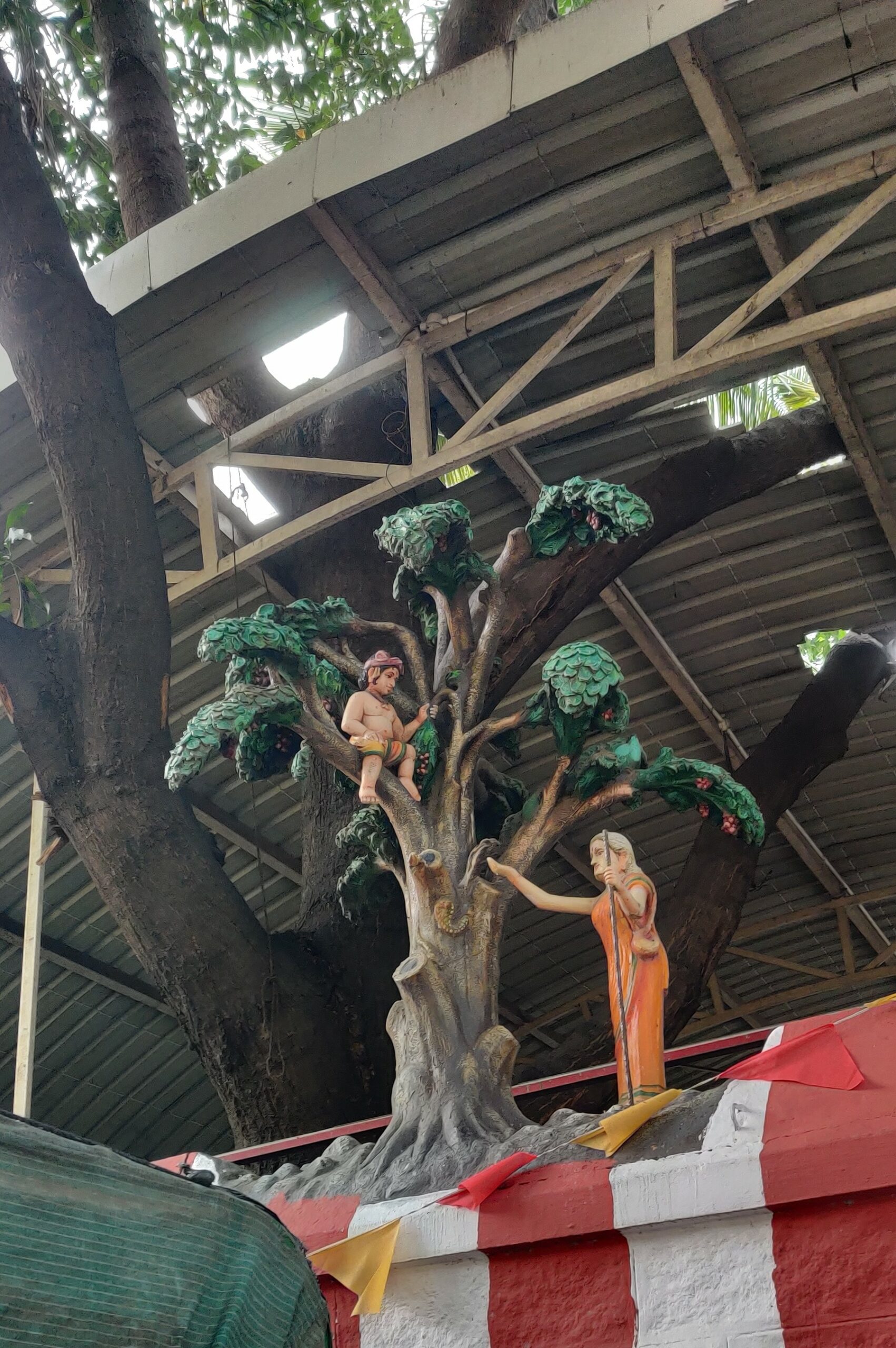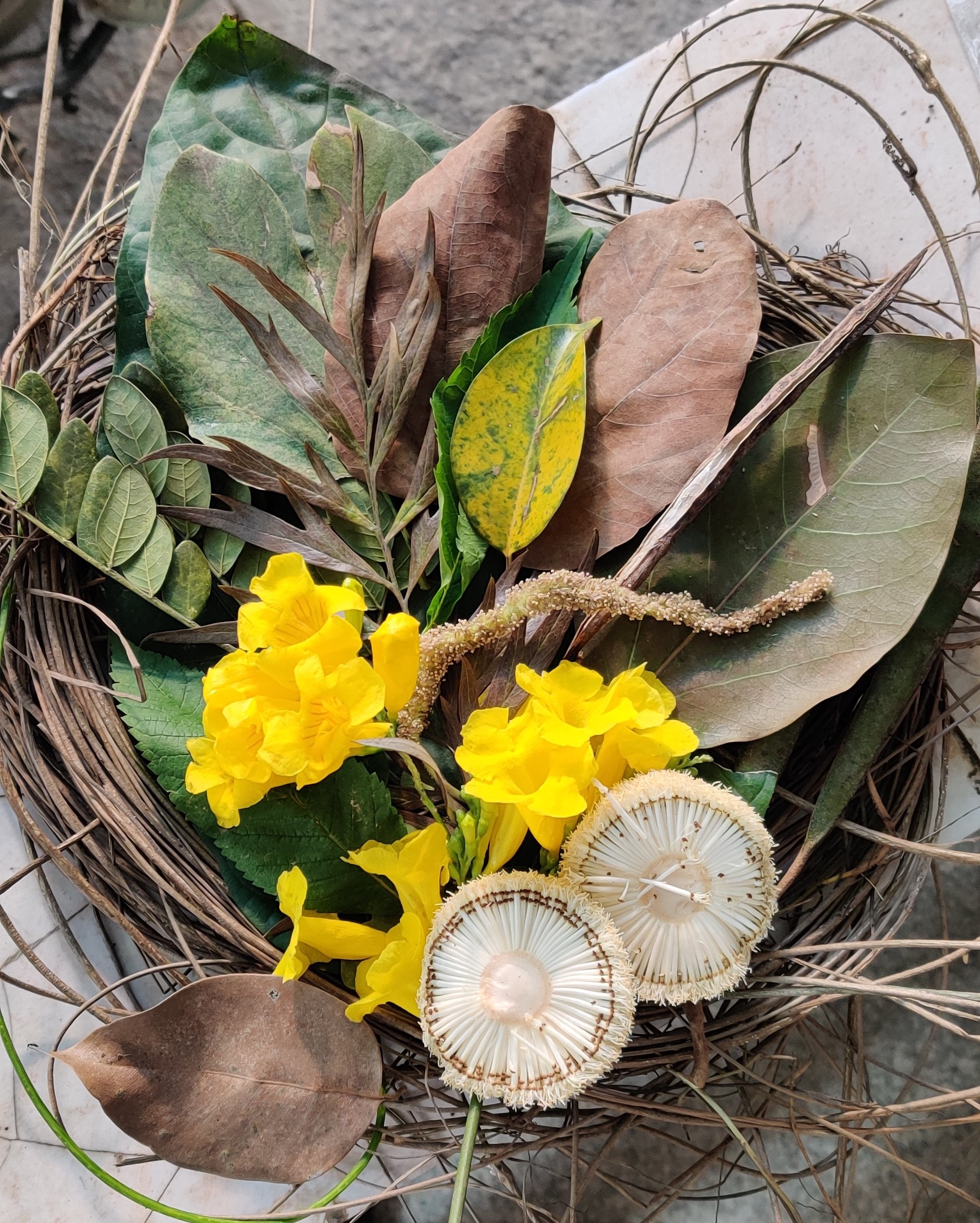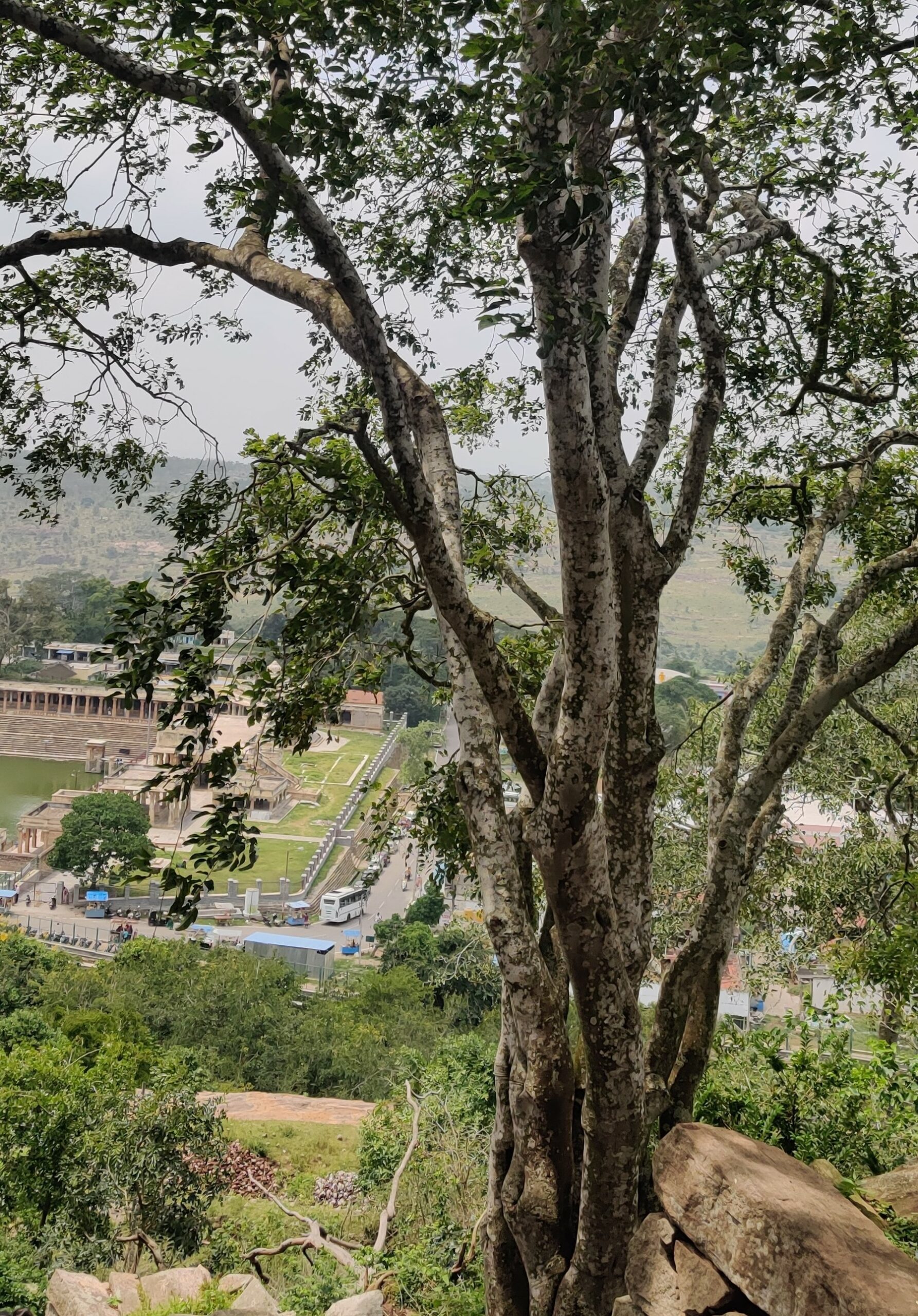‘Amma, which tree is that sutta pazham/ sudatha pazham legend about?’ I, a non-religious person, asked my very pious mother about a mythological story 1 I had heard as a child. The detail of the tree species is beside the point of the story’s metaphor, but my mother, gifted with a green thumb, entertains me with the answer ‘Naval maram (Jamun tree).’

Figure 1: The legend of Tamil poet Avvaiyar’s enlightenment under a Jamun tree as symbolized on a temple wall.
Having rejected the idea of religion and societal rules, I’d felt lost and disconnected from my family. Now, after finding my own quiet faith based on an ecological understanding of the world around me, I‘ve come to recognize a language I and my mother can now communicate in stories about trees and nature. This is my homecoming.
It started in late 2021, when I got into my Masters in Landscape Architecture which was still an online program through the second wave of COVID-19. I was keen to learn about the trees around me and outside of the onscreen classes, so I began in earnest and took early morning walks with my mother through avenues and parks. Sometimes we‘d set off in the twilight hours when one can only see silhouettes, but the telltale forms of certain species were sufficient to identify some common specimens.

Figure 2: Souvenirs from that first mother-daughter Tree walk in 2021.
A few months ago, I travelled with my family to Melukote, a quaint sacred town. Everyone was on pilgrimage— while it was religious devotion for others, conversations with nature were it for me. For someone who lives in the very urban city of Bangalore, the appeal of less-intervened/ rural landscapes is highly significant. The walk up the steps of the hill was far more spiritual a journey for me, than what I might have found in a shrine. My mother and I kept up a game of identifying trees pausing at instances. We saw Pungai maram (Pongamia pinnata), Poovarasu maram (Thespesia populnea), Icchham (Phoenix sylvestris), and Veppalai (Wrightia tinctoria) – the latter trees are rarely found in the city.

Figure 3 : A Pongamia pinnata on the Yadugiri hill in Melukote. The Lichen-covered trunk confused us in identifying the species.
But it isn’t just reconnection with my mother, but also having new-found respect for my roots, for there are truths in them. For instance, the first day of the new year in many cultures of south India is welcomed by including the blooms/ fruits from trees of the local environments- results of springtime phenology. On Ugadi- Kannada and Telugu New Years, it may be through the inclusion of Neem flowers and raw Mango fruits as vital ingredients for dishes of the day 2; or on Vishu (in Kerala), it may be through the presence of the Kanikonna (Cassia fistula) flowers in the Kani, auspicious items one must view on the day. Of course, the belief that the sight of the flowers brings prosperity and good luck held functional value as an indicator of on-time season/climate and, in turn, agricultural productivity for the ancestors.
What remains to be seen in this Anthropocene-wrought climate change is whether these trees will continue to follow the calendar and provide us with their offerings for the occasions we have fixed upon.
As for me, like the poet Avvaiyar’s enlightenment from the Jamun tree story, I’ve come to renounce my set ideas and sweeping judgements about my parents’ faith, traditions, and practices while I am seeking and trying to honour aspects I believe to be essentially ecological and thus animistic in origin— what I consider my inheritance, and I have the trees to thank for it.
Picture credits: Sindhuja Sarasram
Note: 1 To read further about the legend: https://www.flickr.com/photos/lkamala/958762048
About the Author: Sindhuja Sarasram is a Landscape architect and nature enthusiast with a keen interest in indigenous plants. She shares her explorations through writing and art on Instagram @albino.orange





